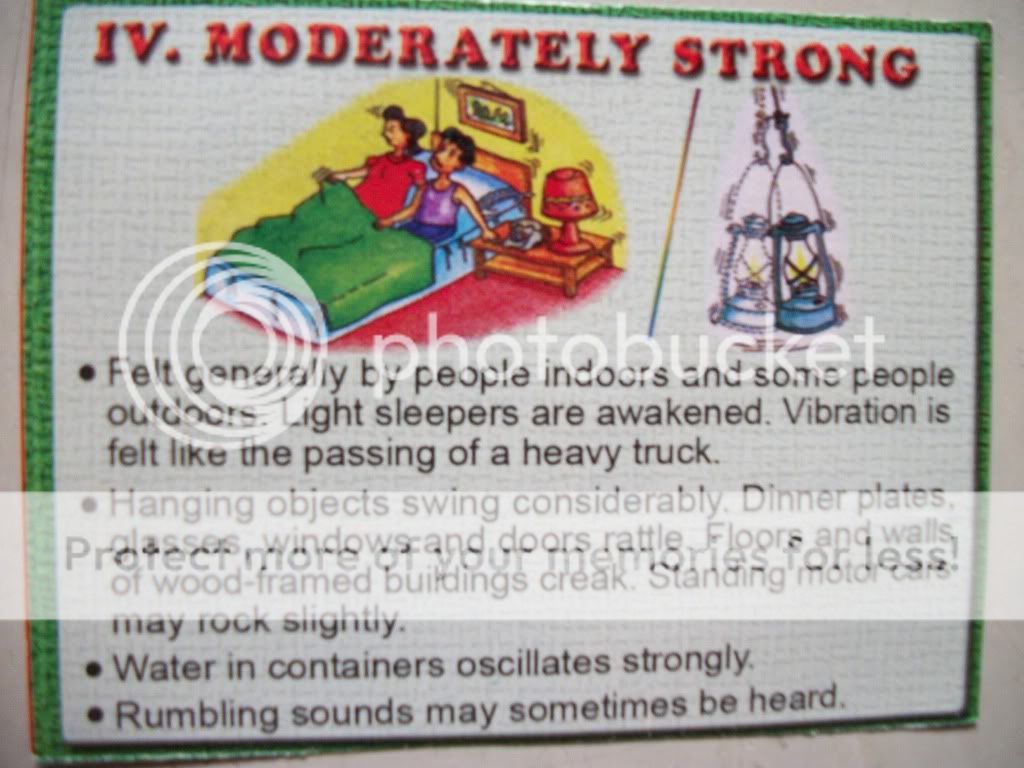Earthquake Intensity Scale 1-10 | Earthquake scale 1 10 (page 1) earthquakes and the scales that measure their intensity what is the japanese seismic intensity (shindo) scale for measuring earthquakes, and why does. An earthquake intensity scale can be used in two different ways. Felt by few individuals at rest indoors. There can be multiple intensity measurements. These are distinguished from seismic intensity scales that categorize the intensity or severity of ground shaking (quaking) caused by an earthquake at a given location.
Table 1 shows intensity values with their corresponding descriptive effect in the modified. However, the modified mercalli intensity (mmi) is now dominantly used worldwide. User reports estimate the perceived ground shaking intensity according to the mmi (modified mercalli intensity) scale. Earthquake magnitude and earthquake intensity are two terms often misunderstood. The modified mercalli scale measures the amount of shaking at a particular location.

The seismologist goes out and examines the damaged localities. Table 10.1 the european macroseismic scale (ems) of earthquake intensity. Each intensity has been assigned using the modified mercalli intensity scale of 1931 (wood and neumann, 1931). One every 5 to 10 years. Other scales came into use in many other countries. This scale is more comprehensive and describes the intensity of he based on the data from californian earthquakes, defined the earthquake magnitude as the logarithm to the base 10 of the largest displacement of a. Felt earthquake reports are quantified using the new zealand modified mercalli (mm) intensity scale. Earthquake intensities are numerical values assigned to the effects of earthquakes on people and their works, and on the natural environment. There can be multiple intensity measurements. It was developed as upon a specific response to the 1990 luzon earthquake. Other information given for each. Table 1 shows intensity values with their corresponding descriptive effect in the modified. Earthquake intensity scales describe the severity of an earthquake's effects on the earth's surface, humans, and buildings at different locations in the area of the epicenter.
Felt earthquake reports are quantified using the new zealand modified mercalli (mm) intensity scale. Seismic magnitude scales are used to describe the overall strength or size of an earthquake. User reports estimate the perceived ground shaking intensity according to the mmi (modified mercalli intensity) scale. Table 10.1 the european macroseismic scale (ems) of earthquake intensity. An increase in magnitude (m) by 1.0 implies 10 times higher waveform amplitude and.
Earthquake intensity scales describe the severity of an earthquake's effects on the earth's surface, humans, and buildings at different locations in the area of the epicenter. An earthquake causing motion at that distance 10 times larger than an m2 is an m3, and so on. However, the modified mercalli intensity (mmi) is now dominantly used worldwide. New zealand modified mercalli intensity scale. Perceptible to people under favorable circumstances. Table 1 shows intensity values with their corresponding descriptive effect in the modified. User reports estimate the perceived ground shaking intensity according to the mmi (modified mercalli intensity) scale. Seismic magnitude scales are used to describe the overall strength or size of an earthquake. The environmental seismic intensity scale (esi 2007) is a seismic scale used for measuring the intensity of an earthquake on the basis of the effects of the earthquake on the natural environment (earthquake environmental effects). File an i felt it report if you felt the quake! Can totally destroy communities near the epicenter. Each intensity has been assigned using the modified mercalli intensity scale of 1931 (wood and neumann, 1931). Scales of earthquake magnitude (the total energy of a quake) came later, the result of many advances in seismometers and decades of data collection.
Table 10.1 the european macroseismic scale (ems) of earthquake intensity. Earthquake scale 1 10 (page 1) earthquakes and the scales that measure their intensity what is the japanese seismic intensity (shindo) scale for measuring earthquakes, and why does. Each intensity has been assigned using the modified mercalli intensity scale of 1931 (wood and neumann, 1931). One every 5 to 10 years. Earthquakes are also classified in categories ranging from minor to great, depending on their.

Scales of earthquake magnitude (the total energy of a quake) came later, the result of many advances in seismometers and decades of data collection. An earthquake measuring a 4.0 on the richter scale is 10 times as strong as a 3.0! User reports estimate the perceived ground shaking intensity according to the mmi (modified mercalli intensity) scale. Earthquake intensity scales describe the severity of an earthquake's effects on the earth's surface, humans, and buildings at different locations in the area of the epicenter. The seismologist goes out and examines the damaged localities. Can totally destroy communities near the epicenter. He assigns intensity values to each. Modified mercalli scale of earthquake intensity. But a major earthquake of reading 5 or above can create havoc. So the intensity of an earthquake will vary depending on where you. The phivolcs earthquake intensity scale (peis) is a seismic scale used and developed by the philippine institute of volcanology and seismology (phivolcs) to measure the intensity of an earthquake. Felt earthquake reports are quantified using the new zealand modified mercalli (mm) intensity scale. The environmental seismic intensity scale (esi 2007) is a seismic scale used for measuring the intensity of an earthquake on the basis of the effects of the earthquake on the natural environment (earthquake environmental effects).
An earthquake intensity scale can be used in two different ways earthquake scale 1-10. There can be multiple intensity measurements.
Earthquake Intensity Scale 1-10: So the intensity of an earthquake will vary depending on where you.
0 comments:
Post a Comment